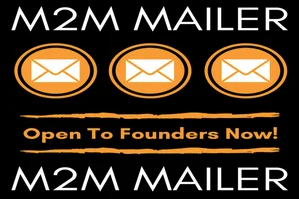The Shift: From Labour to Algorithm
Some revolutions don’t announce themselves with fireworks. They hum quietly in the background — until one day you realize everything has changed. That’s what’s happening right now with artificial intelligence.
Tasks that once demanded time, skill, and focus are being absorbed by algorithms. Machines are no longer assistants; they’ve become operators. They write, design, analyze, and even sell while we sleep. The internet is filling with self-running digital systems that produce measurable income long after their creators have moved on to something else.
If the last decade belonged to freelancers and side hustlers, this one belongs to the automation builders the people who know how to make AI work for them.
Passive Income vs. the Modern Side Hustle
Let’s draw a clear line: a side hustle needs you. It’s a job you control, but still a job. Passive income, on the other hand, keeps moving when you don’t. It’s the quiet hum of a machine that earns because you’ve built it to.
In the world of AI, passivity has a very specific shape. It means your system can create, distribute, and monetize without constant human input. A content engine that posts itself. A chatbot that sells subscriptions. A voice clone that reads audiobooks through the night.
You’re not outsourcing tasks — you’re constructing tiny, intelligent workers that multiply your effort endlessly.’
How Platforms Reward Intelligent Automation
Here’s the paradox: search engines once punished automation. Now, when it’s done with care, they reward it. Google’s RankBrain and BERT don’t look for rigid keyword matches; they chase meaning, intent, and usefulness. Well-trained AI can mirror that understanding beautifully.
When you teach an AI to answer the real question behind a query — to deliver empathy, precision, and clarity — it doesn’t just “rank.” It belongs on the first page. The same goes for YouTube, Etsy, and Gumroad: platforms crave consistency, volume, and engagement. Those just happen to be the three things AI can do forever.
The Six AI-Powered Streams of Passive Income You Haven’t Tried Yet
1. Automated Micro-Niche Content Sites
Imagine a portfolio of tiny, laser-focused blogs — each covering a different corner of the internet. Recipes for rare diets. Productivity hacks for architects. Budget travel for new parents. AI can write them all.
Tools like ChatGPT, Claude, and SurferSEO can churn out search-optimized articles that target long-tail keywords too small for big publishers to care about but perfect for ad and affiliate income. Link them together. Schedule posts through a CMS API. Let Zapier update socials. It’s the digital version of compound interest — one site feeding another until the network hums on its own.
2. AI Art & Prints with Print-on-Demand Integration
Some people spend years finding a signature style. Others teach an AI to invent one. Platforms like Midjourney and Leonardo.ai can create thousands of unique art pieces, each ready for a canvas, mug, or T-shirt. Connect that output to Printify, Etsy, or Redbubble, and you’ve built an endless studio that ships art worldwide while you sleep.
Each sale feels personal to the buyer. That’s the secret — AI’s unpredictability gives every print a human heartbeat.
3. Voice Cloning for Audiobook and Narration Royalties
Your voice can work even when you can’t. With ElevenLabs or Play.ht, you can clone it, train it, and deploy it across platforms like Spotify or Audible. Record a library of public-domain books or narrated stories, then upload and collect royalties.
It’s strange at first, hearing “you” talk while you’re nowhere near the microphone. But that’s the point. AI lets you scale yourself — your sound, tone, and cadence — without ever stepping into the studio again.
4. Chatbot Monetization through Subscriptions and Funnels
Not every profitable conversation involves a human. Custom chatbots built with Chatbase or Botpress can serve as tutors, wellness coaches, or product guides. Train one around a niche topic — say, “freelance tax prep” or “minimalist home design” — and plug it into a subscription model or affiliate funnel.
These bots don’t just respond. They remember, learning user patterns to recommend better answers and higher-value products. Over time, they feel less like code and more like companions — and that emotional bond converts.
5. AI-Generated Micro-Apps and Plugins
Code used to be a barrier. Now it’s a playground. With Glide, Bubble, or Replit Ghostwriter, you can create micro-SaaS tools powered by AI APIs — everything from resume optimizers to daily habit trackers.
Each app becomes a tiny business. Charge a few dollars a month. Offer premium tiers. License the API. Once deployed, maintenance is light and updates can even be automated. You’re not building one product; you’re constructing a fleet of small, steady earners.
6. Automated Lead Generation and B2B Resale
In business, data is gold. AI can mine, clean, and qualify leads at a scale no team could match manually. Tools like Clay, Apollo, and Phantombuster can scrape web data, analyze sentiment, and score potential buyers.
Sell those leads to agencies, consultants, or recruiters — or use them to power your own funnels. The model is simple: the cleaner and more targeted your data, the higher your price per lead. An ideal source if you are looking to gain Buyer Traffic is Lead Lightning which comes with proven funnels + step-by-step training to start fast — no guesswork. Complete with 24/7 AI Follow-Up, This system has built-in AI whivh engages, answers, and nudges your leads automatically.
Watch the video here; https://networklinks.pro/Puzzle
The Toolstack That Holds It All Together
Choosing Your Core Engine
Start by deciding which language your system will speak. Text? Image? Voice? Code?
If you write well, go with ChatGPT or Claude. If you think visually, Midjourney or Leonardo.ai will feel like magic. Audio lovers — look to ElevenLabs or Play.ht. Coders and tinkerers? Replit AI or GitHub Copilot can turn your logic into product.
Your chosen modality becomes the heartbeat of your passive-income network.
Connecting the Dots: Prompts, APIs, and Automation
A single tool can’t build a business. The magic lies in how they talk to one another. Connect them through Zapier, Make, or Pipedream so that creation triggers publishing, publishing triggers promotion, and promotion triggers data tracking.
Example: AI writes an article → CMS publishes → Twitter posts → Google Analytics updates.
That’s not workflow — it’s symphony.
From Deployment to Monetization
Every AI income engine runs on three gears: content, traffic, and conversion. Build something people want to see, give them a way to find it, and make it worth their while to click again.
Start with one working loop — a blog that earns ad clicks, a chatbot that sells affiliate links — and let the data tell you where to expand.
Scaling, Risk, and Keeping Your Systems Human
Staying Invisible to Detection and Within Policy
The smartest move isn’t to fool Google; it’s to earn its trust. Add your fingerprints — edit, fact-check, inject real experience. A light touch of humanity can transform even the cleanest AI draft into something that passes every authenticity signal.
Diversifying to Protect Against Platform Shifts
No single platform is forever. Build on multiple surfaces — search traffic, eCommerce, and B2B — so that one algorithm update doesn’t erase your progress. Diversification is the safety net automation needs.
The “Human in the Loop” Principle
People crave connection. Even the most polished AI system needs small doses of you — your humor, your opinion, your quirks. Those moments of imperfection build trust, the one thing no algorithm can fake.
Real-World Examples That Actually Work
A Niche Content Site That Prints Cash
A travel blogger used ChatGPT and SurferSEO to spin up 150 micro-articles targeting obscure destinations. After three months, ad revenue crossed $1,800 a month — and now the site updates itself.
Turning a Voice Clone into Royalties
A freelance narrator cloned her own voice and produced forty public-domain audiobooks. Uploaded across Spotify and YouTube, her digital self now earns roughly $300 each month, hands-free.
The Chatbot That Sells for You
A marketer built a chatbot recommending productivity software. Every time it suggested a paid plan, it dropped an affiliate link. Today, it quietly pulls in $1,200 a month with zero maintenance.
Your First 90 Days Toward AI-Powered Passive Income
Weeks 1–4: Find the Spark
Pick a niche you understand. Choose your AI medium — text, art, or voice. Build one simple system that could, in theory, run on its own.
Weeks 5–8: Test and Monetize
Publish your first batch. Add ad placements, affiliate links, or simple products. Watch which ideas resonate.
Weeks 9–12: Automate and Expand
Link your tools together. Clone what works. Reinforce what earns. Each cycle tightens the loop between idea and income until the machine hums without you.
Products / Tools / Resources
These are the platforms and services mentioned throughout the article — handpicked for practicality, reliability, and accessibility:
- ChatGPT, Claude, and Gemini — text generation and idea development
- SurferSEO — keyword and content optimization
- Midjourney, Leonardo.ai, DALL·E 3 — AI image generation
- ElevenLabs, Play.ht — realistic voice synthesis
- Chatbase, Botpress — chatbot creation and monetization
- Glide, Bubble, Replit Ghostwriter — low-code app builders
- Zapier, Make, Pipedream— automation and integration frameworks
- Lead Lightning, Clay, Apollo, Phantombuster — AI-assisted lead
generation
- Printify, Etsy, Redbubble — print-on-demand marketplaces
Each one can anchor an income stream — or link together into something bigger. Your only task is to decide which rhythm of automation sounds most like you.
Affiliate Disclosure: This article and its content may contain affiliate links, which means that if you click on one of the product links, I may receive a small commission. I only promote and recommend products that I have personally verified and/or used myself.














